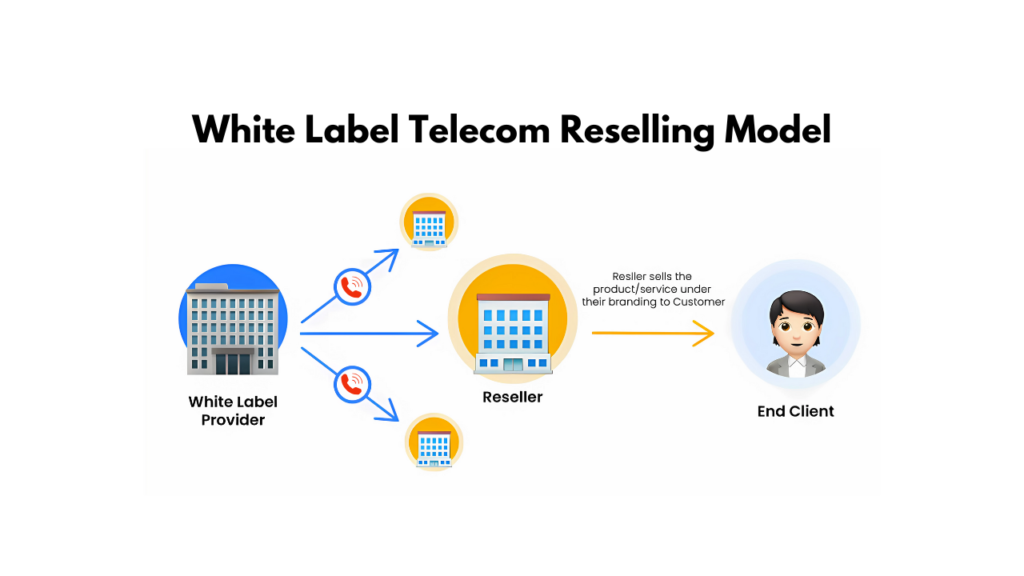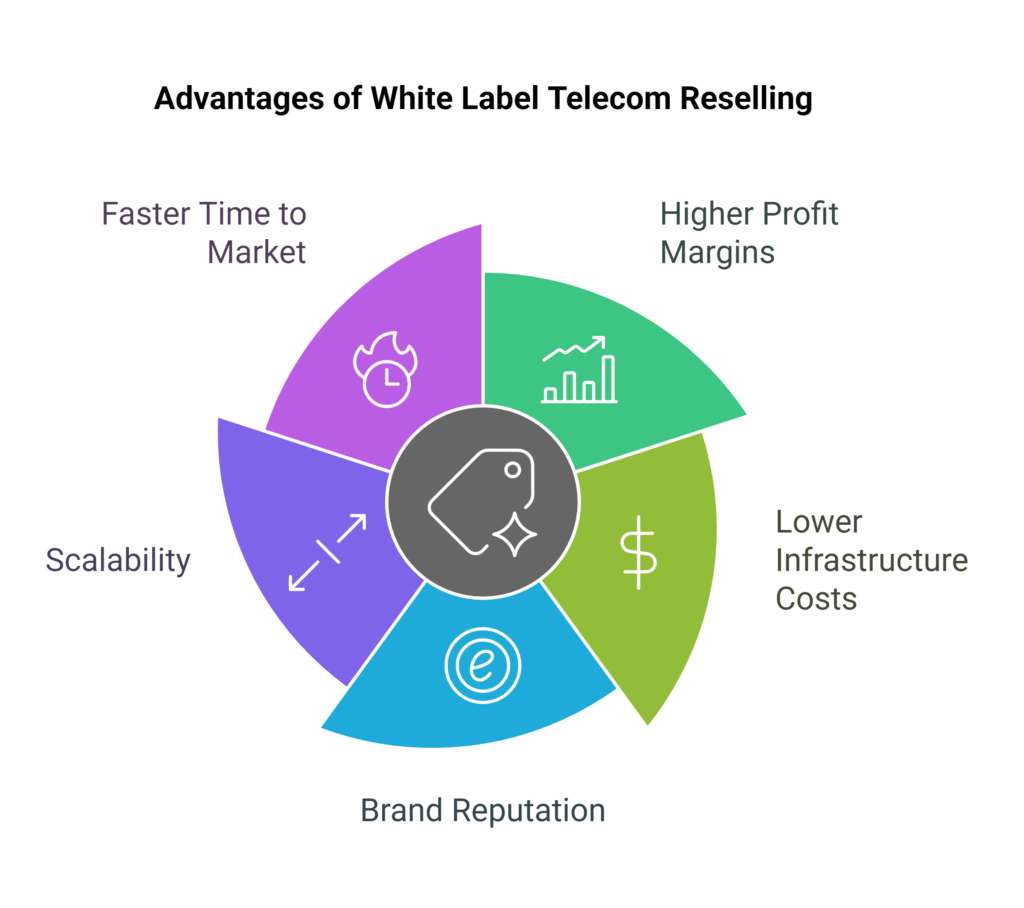Table of Contents
- Introduction
- Overview of the White Label Telecom Reselling Model
- What would you get by the end of the article?
- Key Benefits of White Label Reselling
- Challenges
- Actionable Strategies
- Real-world Examples
- How Spenza helps
- What Does It Mean To Be a White Label Telecom Reseller?
- Benefits of Becoming a White Label Telecom Reseller
- Higher Profit Margins and Lower Costs
- Lower Infrastructure Costs
- Benefit from Existing Brand Reputation
- Scalability of Business Operations
- Faster Time to Market
- Navigating Challenges in White Label Telecom Reselling
- Common Obstacles and How to Overcome Them
- Strategies to Maximize Profits as a White Label Reseller
- Pricing Strategies
- Partner Selection and Negotiation
- Bundling Services for More Value
- Marketing Strategies
- Customer Retention Techniques
- Case Study: Mint Mobile’s Blueprint for Success as a White-Label Telecom Reseller
- Spenza: Enabling White-Label Telecom Resellers to Boost Efficiency and Profitability
- Rapid Deployment and Scalability
- Integrated Billing and Revenue Management
- Wide spectrum of operator partners
- Streamlined Operations
- Data-Driven Insights
- Conclusion
- FAQs

Overview of the White Label Telecom Reselling Model
A white-label telecom reseller uses existing telecom technologies and platforms to offer services under its own brand. With this model, resellers can avoid the high costs and complicated processes of building and managing telecom infrastructure. By working with a reliable provider, resellers can offer flexible solutions that meet the needs of specific markets. These solutions can include everything from billing and connectivity to customer service. Now is a great time to get into this money-making market because technology is improving and the demand for connectivity across various industries from IoT to mobile communications is increasing.
This blog lays down clear actionable insights, key advantages, and possible strategies for readers who are keen to make a huge success as a white-label telecom reseller. Strategic partnerships, pricing models, marketing tactics, and operational procedures will be discussed to help maximize returns on the invested amounts while providing solutions to common telecom challenges.
What Would You Get by the End of the Article?
By the end of this comprehensive guide, you will:
- Understand the white-label telecom reseller model and its key features.
- Key benefits of adopting this model include profit margins, cost efficiencies, and scalability.
- Insights into potential challenges and practical strategies to overcome them.
- Step-by-step tactics for pricing, partner selection, marketing, and customer retention.
- Explore real-world examples and case studies of successful resellers to reinforce your learning.
What Does It Mean To Be a White Label Telecom Reseller?
A “telecom reseller” is a company that buys telecommunication services like phone lines, internet access, or mobile plans in bulk from larger providers and then sells them to smaller businesses or individual customers, essentially acting as an intermediary between the wholesale provider and the end user, often customizing the service package to meet specific customer needs.
Key Benefits of White Label Telecom Reselling

1. Higher Profit Margins and Lower Costs
You can choose your own prices as a white-label telecom reseller, which is one of the biggest advantages of this model. You can directly control your profit margins. This freedom makes your business more successful because you don’t have to rely on prices set by third parties anymore.
2. Lower Infrastructure Costs
White-label telecom resellers avoid the costs of building and running their own telecom infrastructure by partnering with well-established telecom providers. This lowers the cost of capital, making the model appealing to startups and small to medium-sized businesses that want to reduce expenses and increase profits.
3. Benefit from Existing Brand Reputation
Working with a reliable provider lets you benefit from established service standards and quality benchmarks. This instant credibility helps you enter the market quickly and build customer trust in your own brand as well.
4. Scalability of Business Operations
The white-label telecom reseller model allows you to scale operations easily. Whether you’re expanding your customer base or adding new telecom services, the flexible infrastructure of white-label platforms supports steady growth without any major disruptions.
5. Faster Time to Market
Partnering with an established telecom company grants you access to cutting-edge technology and dependable network infrastructure, along with industry insights that enable you to kickstart your services faster, efficiently manage customer engagements, enhance your brand identity, and customize offerings to meet consumer demands in the market.
Navigating Challenges in White Label Telecom Reselling
The telecom landscape is very dynamic. Consumer expectations and industry trends evolve regularly, demanding that your service offerings stay agile and flexible. Staying informed about regulatory updates, technological breakthroughs, and competitive shifts is crucial to keep your business competitive and relevant in the telecom market.
Common Obstacles and How to Overcome Them
Every business model has its challenges. As a white-label telecom reseller, you might come across the following hurdles:
- Regulatory constraints: Staying aware of regulatory frameworks is essential if you are running a white-label telecom reselling business because compliance standards vary by geographical region. These can change over time as well, potentially causing delays or increased expenses if not addressed properly.
- Competition in the market: This is another challenge in the telecom landscape. Here, well-established and startup players struggle to gain more consumers, making it hard to compete, beat down, and drive profit margins.
- Integration Complications: While integrating, we may encounter issues such as ensuring compatibility with existing systems, managing data migration, and scaling technology as the company grows. These can impact service reliability and customer satisfaction.
Partnering with capable vendors, remaining informed on all the industry trends and developments, and investing in reliable technology frameworks are approaches you might adopt to mitigate these issues. By addressing these obstacles from a proactive perspective, you can establish a successful white-label telecom reseller business.
Strategies to Maximize Profits as a White Label Reseller

1. Pricing Strategies
Creating a competitive and profitable pricing strategy is very important. Consider flexible pricing models like pay-as-you-go or tiered subscription packages to cater to different customer groups. This method helps you meet various customer needs while keeping good profit margins.
2. Partner Selection and Negotiation
The success of a white-label telecom reseller is dependent on selecting the proper partners and getting favourable terms. Look for providers with a great reputation, dependable networks, and solid support, as these factors have a direct impact on the quality of your service. When negotiating, look for features that will increase your earnings, such as flexible billing, volume discounts, and packaged services that offer value.
3. Bundling Services for More Value
Combining telecom services like voice, data, and messaging benefits both you and your customers. Bundles enhance customer satisfaction while generating additional revenue streams, increasing your profits.
For example, you can collaborate with airlines and hotels to offer a free 1GB eSIM to travellers who book a flight ticket or a three-day stay. This adds convenience to their trip while promoting your telecom services.
4. Marketing Strategies
Use digital marketing strategies such as SEO and social media campaigns to boost brand visibility. Create instructive content that highlights the benefits of your services, and offer case studies or client testimonials to increase trust and credibility.
5. Customer Retention Techniques
Gaining new consumers is crucial, but retaining them is critical for long-term success. Increase loyalty with customized care, regular follow-ups, unique discounts, loyalty programs, and improved services. Implementing these methods can improve consumer interactions and encourage them to remain active and loyal to your brand.
Case Study: Mint Mobile’s Blueprint for Success as a White-Label Telecom Reseller
Mint Mobile transformed white-label telecom reselling by leveraging T-Mobile’s network and rebranding its services with a focus on affordability, flexibility, and customer experience. Here’s how they achieved success:
- Bundled Plans: Offering 3, 6, and 12-month prepaid plans at discounted rates encourages customer loyalty and ensures steady revenue.
- Smart Marketing: Backed by Ryan Reynolds, Mint Mobile’s witty, bold campaigns make the brand relatable and appealing to budget-conscious, tech-savvy consumers.
- Customer-First Approach: Transparent pricing, an easy sign-up process, and reliable service drive satisfaction and retention.
By combining a cost-effective service model with innovative branding and white-label reselling, Mint Mobile has disrupted an industry dominated by major carriers. Source
Spenza: Enabling White-Label Telecom Resellers to Boost Efficiency and Profitability

To make the most profit and work efficiently as a white-label telecom reseller, using a comprehensive connectivity management platform like Spenza can help you a lot. Here’s how Spenza can help you succeed:
- Rapid Deployment and Scalability: Spenza accelerates your market entry with its rapid deployment capabilities. You can launch your telecom services quickly using Spenza’s APIs, integrations, and frameworks.
- Integrated Billing and Revenue Management: Spenza offers revenue management tools, allowing you to easily track customer subscriptions and usage, automate billing cycles, and ensure accurate invoicing.
- Wide spectrum of operator partners: Spenza lets you connect with multiple telecom operator partners(30+), allowing you to offer different mobile plans and services for various market segments.
- Streamlined Operations: By automating critical operations like eSIM management, service requests, and customer support, the platform improves operational efficiency.
- Data-Driven Insights: Spenza offers actionable insights through robust analytics tools, enabling you to track customer behaviour, usage trends, and market dynamics.
Ready to Maximize Your Telecom Reselling Profits? Launch quickly, scale seamlessly, and boost your bottom line with Spenza today!
Conclusion
During this modern digital economy, a white-label telecommunications reseller business has emerged as a lucrative opportunity worth diving into. The reasons range from higher profit margins, cost savings to brand recognition, scalability, and rapid market entry. Although challenges do arise, some preferred strategies to beat the obstacles include being competitive in pricing and making good and sound telecom partner choices.
All in all, you can make your company a successful, sustainable business that provides quality telecom services under your brand name with the help of these ideas. Embrace this model to maximize profits and tap the growth opportunities within the telecom sector. Good luck!
FAQs
A white-label telecom reseller markets telecom services under their own brand by partnering with established telecom providers.
This model allows you to set your own pricing, reduce dependence on commission-based models, and minimize infrastructure costs.
Spenza’s platform offers comprehensive connectivity management, rapid deployment, integrated billing, and data-driven insights. These features help streamline operations and boost profitability.
Spenza offers scalability and actionable insights, helping you streamline operations and drive continuous growth in the telecom industry.
Spenza helps resellers save time by automating billing processes, providing quick deployment solutions, and offering easy-to-use management tools.
Ready to launch? Consult our experts to map your strategy. Share this guide with your team to kickstart planning.





